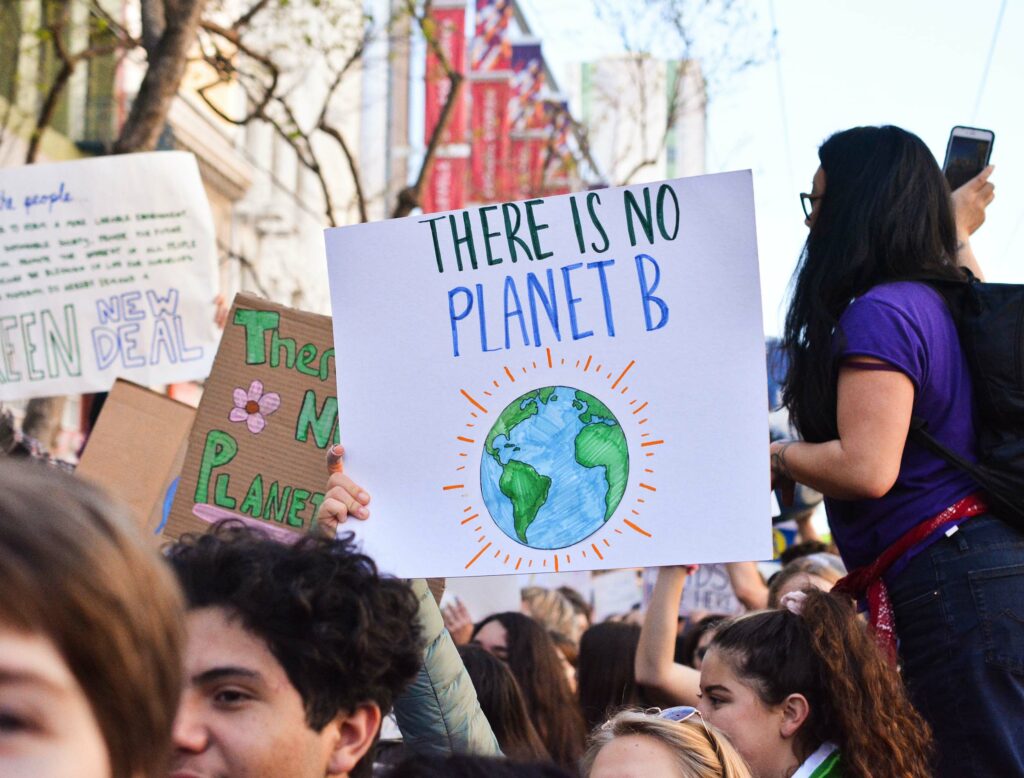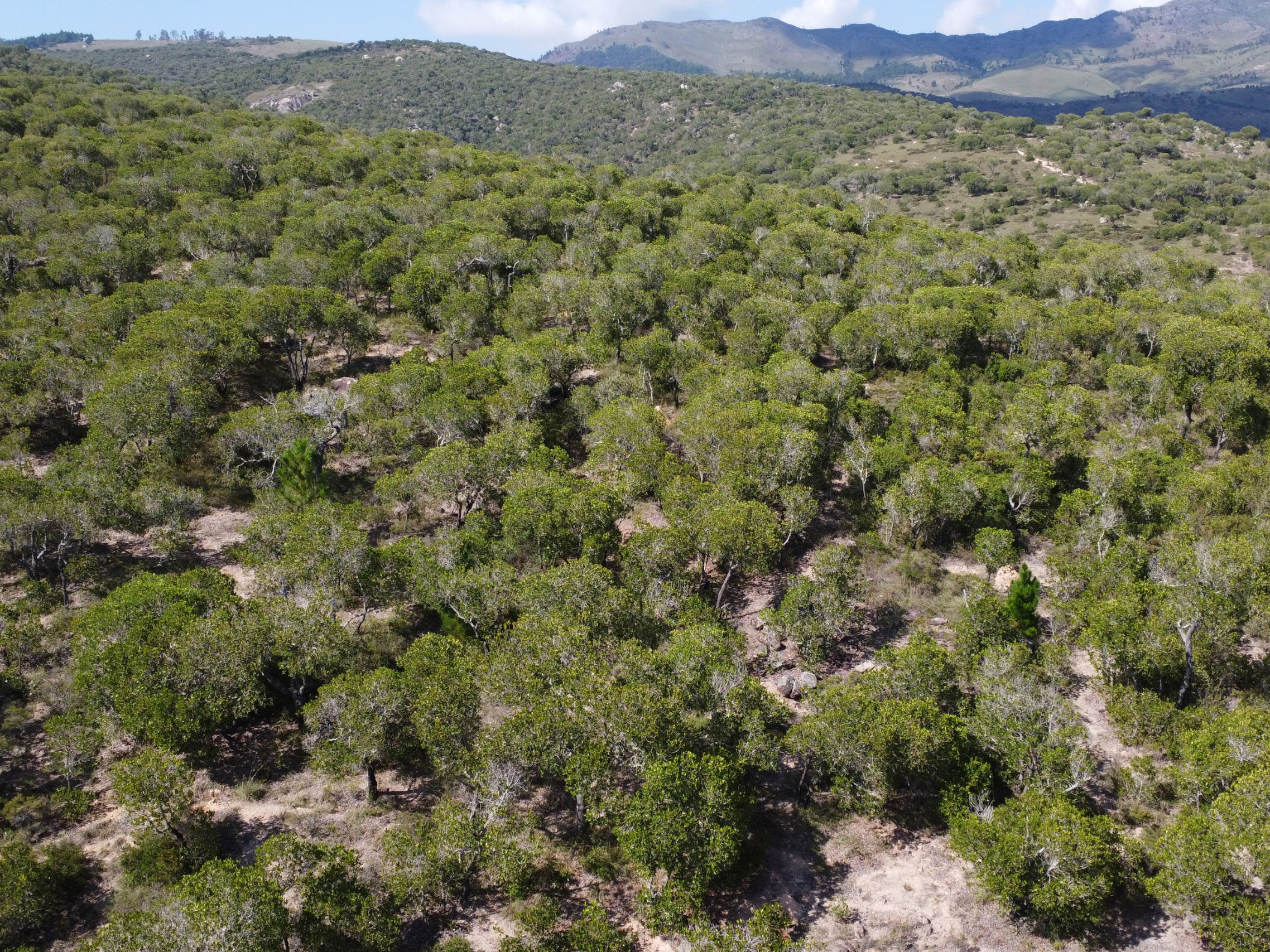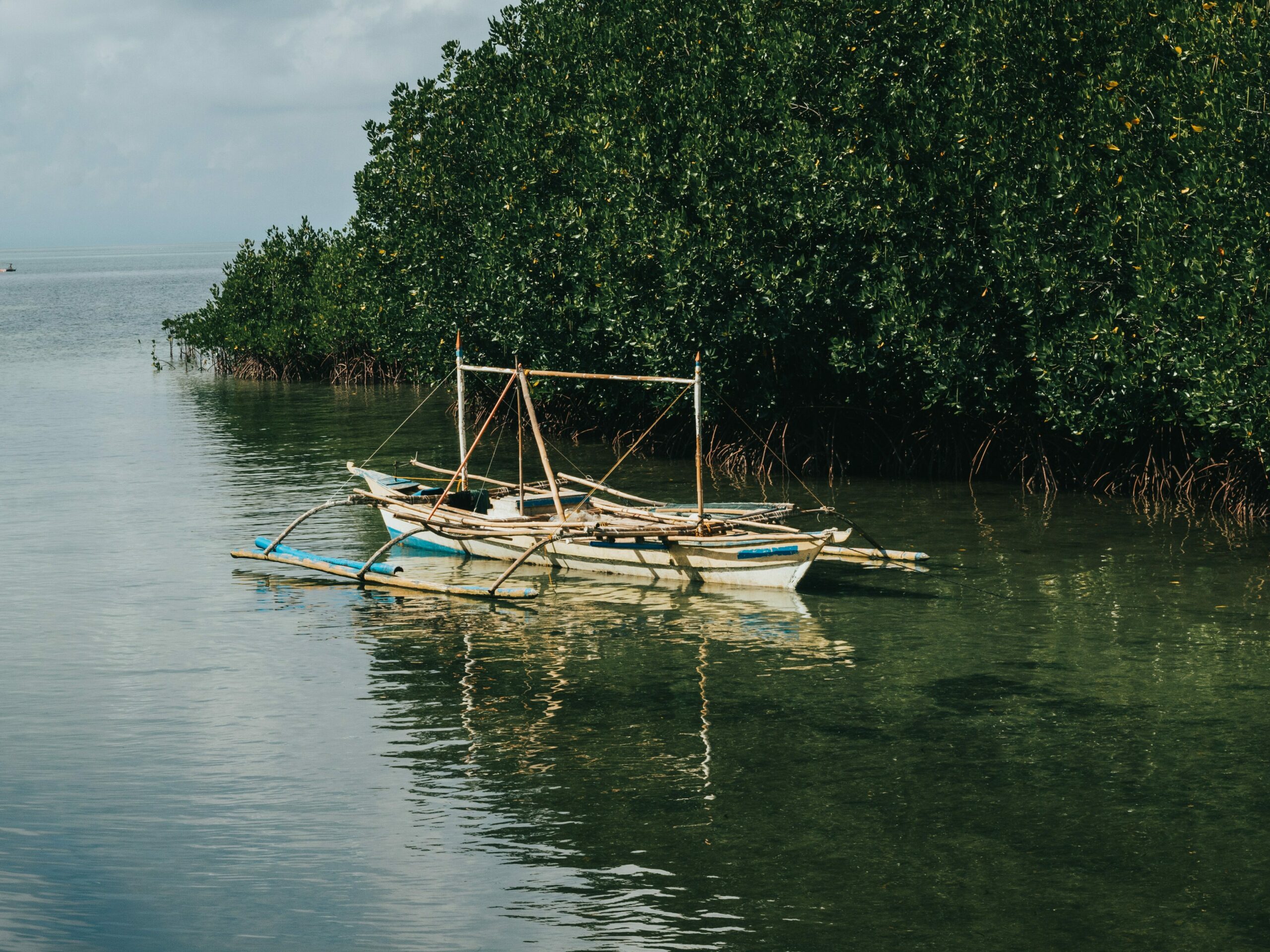26 April 2022 • NEWS
The forest : from an indicator to a solution to climate change

As global warming accelerates, awareness is growing and actors such as Planète Urgence have started a race against time to reduce the impacts of climate change.
In its latest report published in April 2022, the Intergovernmental Panel on Climate Change (IPCC) issued a set of solutions to be implemented today in order to reduce the disastrous consequences of climate change and ensure a « livable future ». Indeed, the UN climate experts estimate that global warming would already endanger 3.3 to 3.6 billion people living in “highly vulnerable” areas. 1 billion people are likely to live in coastal areas threatened by rising sea levels by 2050. And all these consequences on ecosystems and populations would be more severe, more numerous and faster than initially expected.
These impacts are already visible in the world: ecosystems are very fragile, the loss of biodiversity is significant and the resilience of human beings is more than ever put to the test.
Faced with this reality, our collective challenge is twofold. We must reduce change by decreasing our gas emissions, preserve and increase the sequestration capacity of carbon « sinks », but also adapt humans to change their lifestyle and make it coherent with the environmental reality. This is an immediate necessity and it must be collective: finding solutions to respect the Paris agreements has never been more important.
« We are at a crossroads. The decisions we make now can ensure a livable future. We have the tools and knowledge to limit global warming. »
Hoesung Lee, IPCC president
The subjects of climate and forests are intrinsically linked since forests contribute to climate stabilization. Despite all its benefits, the forest remains highly vulnerable to climate change, particularly due to human activities. Faced with this emergency, how can we understand the issue of preservation and restoration of forests in the context of climate change? Let’s look at the ways that forests stabilize the climate and, paradoxically, also represent a victim of it. Finally, let’s see how Planète Urgence contributes to this balance through the preservation of forests.
The forest, a climate stabilizer
The climate is the result of the interactions of components such as forests, oceans, animals, plants, soils, air and atmosphere. All these elements form a fragile balance and are therefore dependent on the evolution of each component. The forest plays an essential role in this climate regulation, since it has many benefits :
- They sequesters carbon and produces oxygen
The forest is what we call a “carbon sink” which can therefore reduce the greenhouse effect. In simple terms, the greenhouse effect is a layer of different gases – the so-called greenhouse gases, such as carbon dioxide (CO2), methane (CH4) or nitrous oxide (N2O) – that retains the sun’s heat on earth. The greenhouse effect is a natural phenomenon that is essential to sustain life on Earth, since without the greenhouse effect, the planet would be 33°C colder! When greenhouse gases are emitted, some of them are absorbed by sinks and the rest remain in the atmosphere and generate an additional greenhouse effect.
Forests represent the second largest carbon sink in the world after the oceans. Indeed, to feed itself and grow, a tree captures carbon dioxide in its leaves and bark, light through its leaves and water through its roots. It then transforms these 3 elements during the process of photosynthesis, which allows it to produce sap and oxygen that it then releases into the atmosphere. Mangroves, forests between land and sea, contribute 3 to 5 times more to this capacity of storage of atmospheric CO2 than temperate forests and have a proportionally very high climate impact.
“Today, the forest is a very well known tool for actors who want to have a concrete contribution to climate change. However, it is necessary to be aware that this impact should not only be measured in tons of carbon sequestered but that it is also active at multiple levels as important.“
Renaud Bettin – Climat expert at Sweep
- They regulates the water cycle
Forests regulate the water cycle by holding water in the soil, filtering it through the roots and evapotranspiration through the leaves. They therefore absorb large volumes of this essential resource, which they gradually redistribute into the atmosphere and the soil, thereby limiting erosion and consequently floods, landslides and landslides.
Do you know the flying rivers over the Amazon? This natural and unknown phenomenon linked to the Amazonian forest is essential for the water cycle.
“Flying rivers are large volumes of water in the state of vapor that move with the wind…. Along its path, the water vapor recycles over the forest, generating rainfall and capturing the transpiration of the trees. Then, as it moves towards the rest of the continent and leaves the forest, it causes precipitation, supplying water to areas that would otherwise be much drier. »
Comments from the pilot and eco-explorer Gerard Moss and Professor Antonio Nobre, researcher at the Brazilian National Institute for Space Research (INPE), collected by GEO
- It contributes to the planetary thermal regulation
Forests reduce the temperature of their immediate environment thanks to evapotranspiration, which is directly linked to water. Indeed, the more trees and biomass a forest has, the more water it retains, whose evapotranspiration refreshes the ambient temperature. This natural cooling can sometimes even be of the order of several degrees (“on average 2.1° in summer”, L’Express, 2021)!
- It constitutes a natural barrier against climatic events
Forests represent a natural barrier against climatic catastrophes. Mangroves located in coastal areas, for example, prevent the soil from degrading excessively, prevent the water from rising and can thus reduce the damage caused by tsunamis. A study by the scientific journal Science following the 2004 tsunami in the Aceh region, which caused 220,000 deaths, indicates that 30 coastal trees per 100 square meters can reduce the flow of a tsunami by up to 90%1. The same protective power was further documented during a 2018 tsunami earthquake on the island of Sulawesi2:
“The houses in the villages of Kabonga and Labuan Bajo, in the Donggala district, were not devastated because they were protected by a mangrove forest of 50 to 70 meters thick. The neighboring villages without mangroves were devastated by a 5-meter high wave, while in these two villages its strength was reduced to 1 meter thanks to this green barrier.”
Widjo Kongko, tsunami specialist
We now understand that forests are the guardians of the climate. They are inseparable from the solutions to be prioritized to ensure mitigation and adaptation to climate change. But unfortunately, they are also among the first victims.
The forest, a victim of climate
Forests are firstly threatened by the increase in temperature. The massive destruction of these ecosystems contributes to this thermal rise for two reasons:
- Cutting down a tree prevents it from sequestering carbon and worse, releases in a few minutes the carbon stored in it for decades! And, as we know, greenhouse gas emissions, including carbon, are the primary cause of global warming.
- The climate is changing very rapidly – too rapidly for trees to adapt to changing environments. Temperature variations, increasingly long and harsh droughts… the world’s forests are seeing entire stands wither away, such as those of beech in Europe, which have not fared well during recent summer droughts.
Climate change is also the cause of disasters that will have a direct impact on the sustainability of forests: increase in forest fires ever more widespread and destructive, frequent flooding in some regions of the world, loss of biodiversity and development of invasive species … The forest must already cope with massive exogenous changes.
“We have a 5% chance of staying below 2°C. Despite a slow start, adaptation is beginning to enter the heart of discussions and must be associated with development objectives for local populations.”
Renaud Bettin – expert Climat chez Sweep
In some regions, climate change accentuates the phenomenon of desertification. Planète Urgence fights against desertification in Cameroon, one of the major fronts of deforestation classified by the FAO since 2018, through its project FARE. This project aims to preserve and restore the environment of the Benue National Park and its periphery, an area at high risk of desertification, and to increase the resilience of local communities. The implementing partner, CERAF-Nord, is implementing the restoration of wildlife migration corridors through the development of agroforestry based on the reforestation of cashew trees. Thanks to this economic chain, producers can learn new sustainable farming practices, organize themselves into cooperatives and thus optimize their stock and sales channels.
The producers will eventually see their living conditions improved thanks to the income generated by the production and sale of cashew nuts, but also by agroforestry side crops (corn, tomatoes, beans, etc.). This will help diversify and secure their livelihoods, particularly during the lean season (the period between the last harvest of last year and the first harvest of the year) when, in this Sudano-Sahelian region with only two annual seasons (dry and wet), the harvests of traditional local crops are scarce.
Planète Urgence an actor for the climate and forests
Planète Urgence was created in the year 2000 and was one of the first associations to alert the public in 2006 and to mobilize for the climate emergency. The association wishes to provide concrete responses to the challenge of climate change and is committed to combine mitigation actions through the preservation and restoration of forests; adaptation actions by supporting the most vulnerable populations, mobilization and awareness.
Mitigation through the preservation of forests
Planète Urgence has been preserving and restoring tropical forests since 2007 and therefore plays a role in mitigating climate change on two levels: reforestation and conservation of existing forests. With more than 11 million trees planted in Haiti, Mali, Indonesia, Madagascar and Cameroon, Planète Urgence is acting on the world’s carbon sinks.
The preservation of forests and the fight against deforestation in the projects allow us to reduce carbon emissions. Indeed, 93% of the wood deforested by man is burned, which amounts to releasing into the atmosphere all of the carbon that had been sequestered by the trees throughout their lives. To fight deforestation, Planète Urgence creates, for example, income alternatives that prevent local populations from depending on wood cutting for their survival.
Helping local populations to adapt
As the +2°C goal for global warming has unfortunately been exceeded, Planète Urgence is helping territories and inhabitants to adapt to these present and future changes. The Intergovernmental Panel on Climate Change (IPCC) has clarified the risks linked to the increase in temperature: droughts, floods, flooding… Each intervention of Planète Urgence must therefore integrate an analysis of these risks and a response adapted to them. One of the actions of the association is the planting of mangroves along the most vulnerable coasts in order to protect coastal villages from flooding.
Raising awareness and mobilizing stakeholders on climate change
Another action is also essential in the eyes of the association: the awareness and mobilization of all actors to climate change. We are convinced that the necessary movement in favor of changing practices will only be possible by explaining the origins and consequences of climate change, and its link to humans and biodiversity. The association has therefore set up projects in the countries where it operates, but also in France, to raise awareness of these issues among young and old alike. In particular, in 2021 it initiated the Planète Education project in schools in Benin to provide information to teachers on forests, climate and biodiversity.
Planète Urgence wishes to have an integrated approach and to have an increasing impact on climate issues by working on the reduction of emissions, sequestration via the increase of global carbon sinks, and adaptation and mobilization of populations.
The preservation and restoration of forests is essential in the fight against climate change. These ecosystems are indeed full of multiple benefits related to climate such as temperature and water cycle regulation, erosion control, carbon sequestration, and adaptation of human living conditions.
Forests respond to this double climate challenge: they reduce it thanks to their function of carbon sink and give a chance to the women and men surviving thanks to them to adapt to this new reality.
The COP and the Climate Summits are therefore urging governments and companies to do more in terms of preserving and restoring forests for the climate. This is a necessity but it is far from sufficient.
Sweep and Planète Urgence are among the actors who promote the climate contribution, notably through forests, and encourage everyone, private actors and citizens alike, to make a concrete commitment to this issue.
Article co-written with Renaud Bettin, climate expert at Sweep
To help Planète Urgence in its actions in favor of the climate:
To learn more about Sweep and understand how to engage your company in reducing these climate impacts: https://www.sweep.net/
Sources & Webography
- All4tress, Comment et pourquoi les forêts assurent la stabilité du climat, 2019, https://news.all4trees.org/foret-stabilite-climat/
- ARTE.tv, Climat : l’avenir incertain de la forêt, Vidéo YouTube, https://www.arte.tv/fr/videos/100627-063-A/climat-l-avenir-incertain-de-la-foret/
- CNRS, Indonésie : enquête sur un tsunami, janvier 2019, https://lejournal.cnrs.fr/articles/indonesie-enquete-sur-un-tsunami
- Courrier International, Indonésie : contre les tsunamis, la mangrove plus efficace que les digues, novembre 2018, https://www.courrierinternational.com/article/indonesie-contre-les-tsunamis-la-mangrove-plus-efficace-que-les-digues
- Futura Sciences, Rapport du GIEC : les problèmes qui attendent l’Humanité avec un réchauffement à +1,5°, juin 2021, https://www.futura-sciences.com/planete/actualites/rechauffement-climatique-rapport-giec-problemes-attendent-humanite-rechauffement-climatique-15-c-92129/
- Futura Sciences, Comment les forêts agissent-elles sur le climat ?, https://www.futura-sciences.com/planete/questions-reponses/rechauffement-climatique-forets-agissent-elles-climat-1003/
- GEO, La découverte des rivières volantes, ce fascinant phénomène qui flotte au-dessus de l’Amazonie, octobre 2019, https://www.geo.fr/environnement/a-la-decouverte-des-rivieres-volantes-ce-fascinant-phenomene-qui-flotte-au-dessus-de-lamazonie-198141
- Good Planet Information, Crédits carbone et deforestation évitée : impact reel ou risque de greenwashing ?, janvier 2022, https://www.goodplanet.info/2022/01/28/credits-carbone-et-deforestation-evitee-impact-reel-ou-risque-de-greenwashing/
- Good Planet Information, L’Humanité à l’aube de retombées cataclysmiques selon le prochain rapport du GIEC, juin 2021, https://www.goodplanet.info/2021/06/23/lhumanite-a-laube-de-retombees-climatiques-cataclysmiques-selon-le-prochain-rapport-du-giec/
- IPCC, Changement climatique : une menace pour le bien-être de l’humanité et la santé de la planète, rapport du GIEC, février 2022, https://www.ipcc.ch/report/ar6/wg2/resources/press/press-release-french/
- L’Express, Les forêts régulent les températures l’été et l’hiver, 4 octobre 2021, https://www.lexpress.fr/actualite/sciences/les-forets-regulent-les-temperatures-l-ete-et-l-hiver-un-havre-pour-la-faune-et-la-flore_2159612.html
- ONF, La forêt et le bois : des alliés pour le climat, Nos infographies climatiques, https://www.onf.fr/vivre-la-foret/raconte-moi-la-foret/comprendre-la-foret/foret-et-changement-climatique/nos-infographies-et-galeries-dimages/+/590::la-foret-et-le-bois-des-allies-pour-le-climat.html
- World Meteorological Organization – Our mandate on climate – https://public.wmo.int/en/our-mandate/climate


